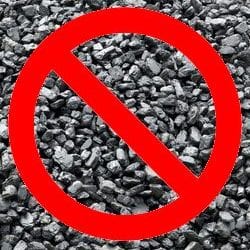National Australia Bank has effectively closed the door to future lending to the fossil fuel sector, after introducing changes to its corporate responsibility strategy that not only recognise the need to cut back on the heavy polluting generation source, but for the bank to conduct business in line with global and corporate carbon budgets.
The bank – which first made its official commitment carbon risk disclosure in 2014 – said in its “Dig Deeper” sustainability report on Monday that it was “identifying, developing and implementing new ways to improve disclosure on carbon risk exposure by collaborating with other financial institutions in Australia and internationally.
This included increasing relevant disclosures on the bank’s lending to the agricultural, energy and natural resources sectors, and the calculation of an updated tally of its “financed emissions,” represented by NAB Group’s share of total Scope 1 and 2 greenhouse gas emissions from the power generation assets in its Project Finance portfolio.

According to investor watchdog and advocacy group Market Forces, the adoption of this “important new language” makes NAB a leader among major banks; committing it – on paper at least – to drastically constrain its fossil fuel investment and rapidly transform the bank’s loan book to clean, renewable energy.
“NAB is the only bank of the Australian big four to have recognised the importance of the carbon budget,” said Market Forces CEO Julien Vincent in comments on Monday.
“Acknowledging it is a key step towards turning commitments on supporting the ‘less than 2°C’ goal into real action,” he said.
“If NAB is true to its word, it will simply not be possible for it to issue financial support to companies or projects that expand the scale of the fossil fuel industry, because there is not enough budget left for many existing fossil fuel projects around the world to see out their lifespans, let alone new projects.”
Already, according to a study released earlier this year, NAB has loaned more to renewable energy than fossil fuels, making it the first of Australia’s major banks to do so since they all came out in support of the 2°C global warming limit last year, Vincent noted.
The Bank said in its report that its current global portfolio of renewable energy generation projects represents a total generation capacity of 2,594MW.
“In 2016, we provided $739 million, measured as exposure at default at 30 September 2016, for renewable energy projects,” the bank’s sustainability report says. “NAB has provided $4.9 billion in project finance for renewable energy projects since 2003. We continue to be the leading arranger (by market share) of project finance to the Australian renewable energy sector.”
The bank also points to its commitment, set in December 2015, to finance $18 billion over the next seven years (to 30 September 2022) to customers engaged in climate change mitigation (e.g.
renewable energy, energy efficiency, low emissions transport) and climate change adaptation activities.
So far it has provided an total of $7.3 billion towards that $18 billion goal, including lending for Green Star certified commercial buildings, specialised and corporate finance for emission reduction projects and lending to low-carbon businesses.

NAB – which has its own emissions reduction target of 21 per cent by mid-2025, from a base year of 2015 – has also been a key player in Australia’s burgeoning Green Bond market, having launched the nation’s first ‘certified’ climate bond of $150 million in December 2014.
And, like Australia’s other big banks, it has teamed up with the Clean Energy Finance Corporation to offer low-interest loans to businesses investing in solar, EVs, and energy efficient technologies.
But, as Vincent notes, the real proof of NAB’s commitment to constrain fossil fuel investment will be in its future lending decisions, particularly considering there is no shortage of coal mining and unconventional gas extraction projects in Australia looking for finance.
As you can see in the charts above, the Bank’s lending book is still fairly heavy on finance to oil and gas extraction and “mining services”, although its coal portfolio looks comparatively diminished.








